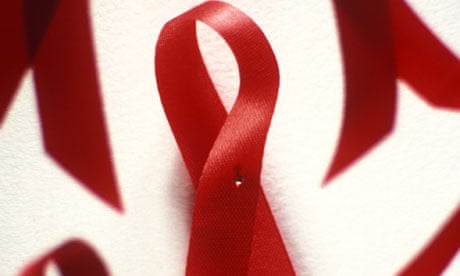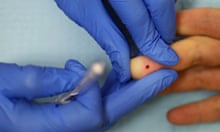The number of gay and bisexual men contracting HIV rose over the past 20 years because of an increase in numbers having unprotected sex, researchers have found.
The number of UK men who have sex with men and having intercourse without a condom rose by 26% between 1990 and 2010, the study by the Health Protection Agency (HPA) and University College London showed.
The HPA said one in 20 men who have sex with men in the UK now had HIV, with the figure rising to nearly one in 12 in London.
It follows a similar study that warned "unsafe sexual behaviour" and a lack of testing was behind a failure to cut the number of cases of HIV among gay and bisexual men in the last decade in England and Wales.
Sir Nick Partridge, chief executive of the Terence Higgins Trust said that advances in treatment had made HIV less visible in the gay community which had falsely encouraged some to believe it was less prevalent.
"One of the consequences of the advances in HIV treatment is that HIV is less visible than it was 25 years ago. To many gay men, it seems less prevalent than it was. The result is risks being taken and getting the risks wrong," he said. "HIV is spread at the most intimate and passionate time and sometimes condoms are forgotten."
He denied that gay men had become complacent. "We know from our own research that the vast majority of gay men know that HIV is the most serious threat to their health and most gay men use condoms most of the time. If gay men had stopped using condoms, there would have been 80,000 more cases. This shows the importance of condom use. We need to increase condom usage and we need more regular testing."
Dr Valerie Delpech, head of HIV surveillance at the HPA, said: "Everyone should use a condom when having sex with new or casual partners, until all partners have had a sexual health screen.
"We also encourage men who have sex with men to get an HIV and STI screen at least annually, and every three months if having condomless sex with new or casual partners – and clinicians to take every opportunity to recommend HIV testing to this group.
"Through combining earlier and more frequent HIV testing, programmes that reduce unsafe sexual behaviour and higher levels of antiretroviral coverage for those requiring it, we could substantially reduce HIV transmission in this group."
The latest research, published in the Plos One journal, also showed that the number of infections would have been 68% worse without the introduction of antiretroviral drugs in the same period, and 400% greater if condom use by gay and bisexual men had ceased entirely from 2000 onwards.
Last November, the HPA said that a record number of people in the UK were living with HIV, with the number of people with the virus reaching 96,000.
But health officials also warned that a quarter of people who have the human immunodeficiency virus are not aware they have been infected.
New diagnoses among gay men reached an all-time high in 2011, with 3,010 men discovering they were infected.
Professor Andrew Phillips, lead investigator at UCL, who conducted the latest research, said: "We created a model reconstructing the HIV epidemic in men who have sex with men in the UK. In doing so, we were able to explore the interplay between HIV testing rates, antiretroviral treatment and sexual behaviour on HIV transmission and incidence. By better understanding the driving forces behind the trends we've seen in the past, it will allow us to make informed choices to reduce new HIV infections in the future."
The research also explored counter-factual scenarios. If had anti-retro viral therapy had not been introduced, there would have been 68 per cent more infection between 2006 and 2010. Higher levels of HIV testing and ART therapy at diagnosis would have led to 62 per cent lower incidence and if condom use ceased there would have been 424 per cent more infections.



